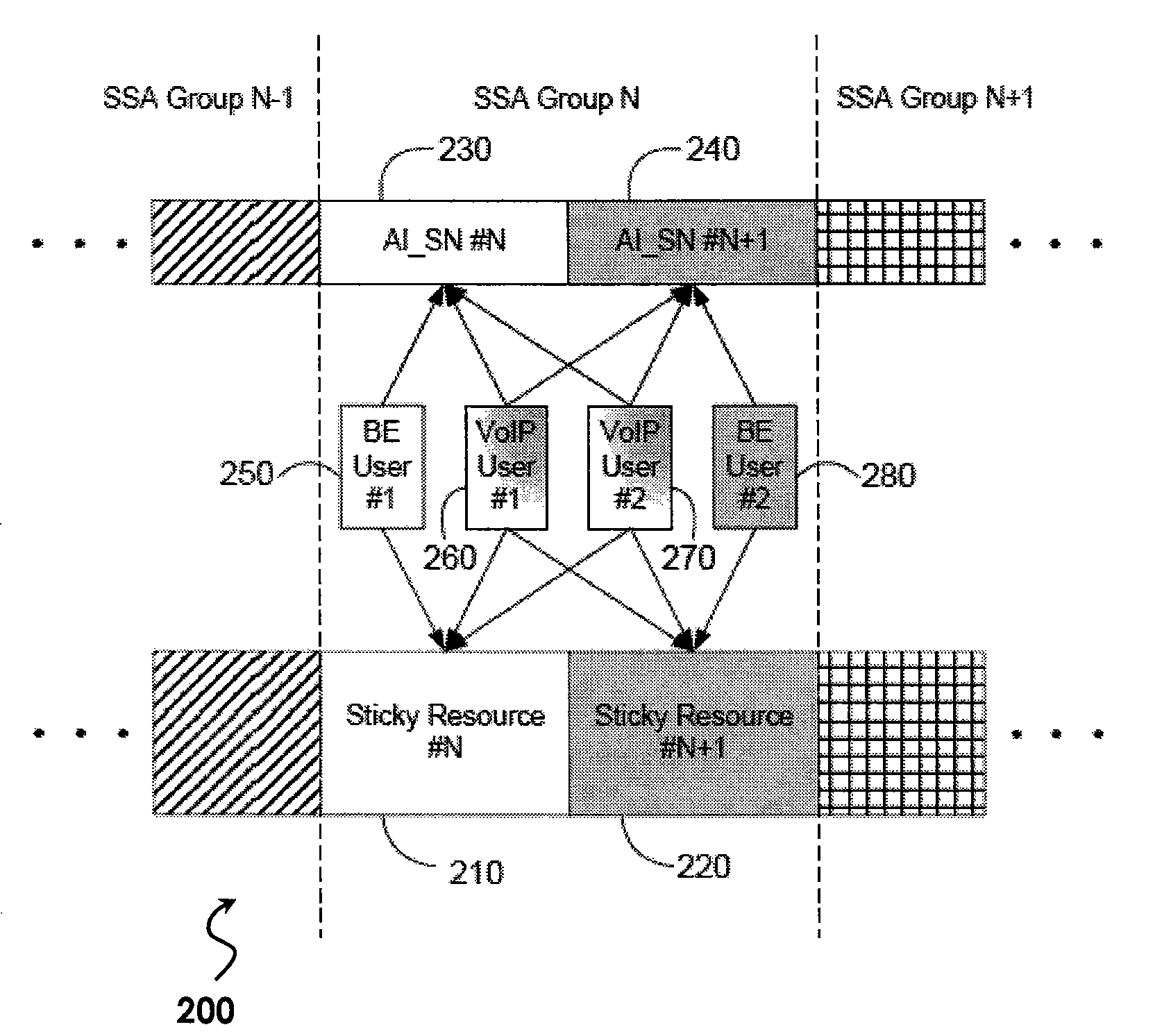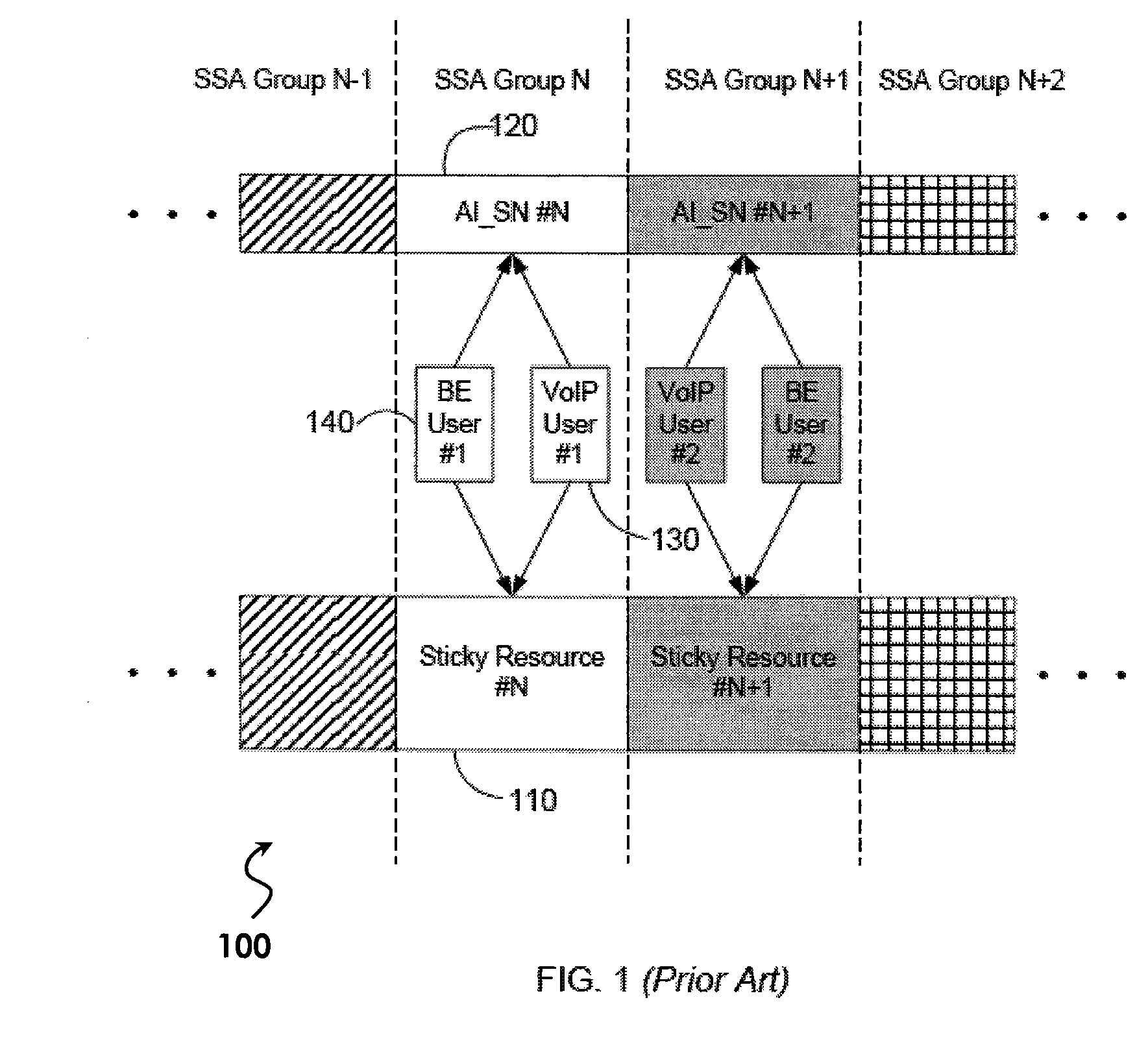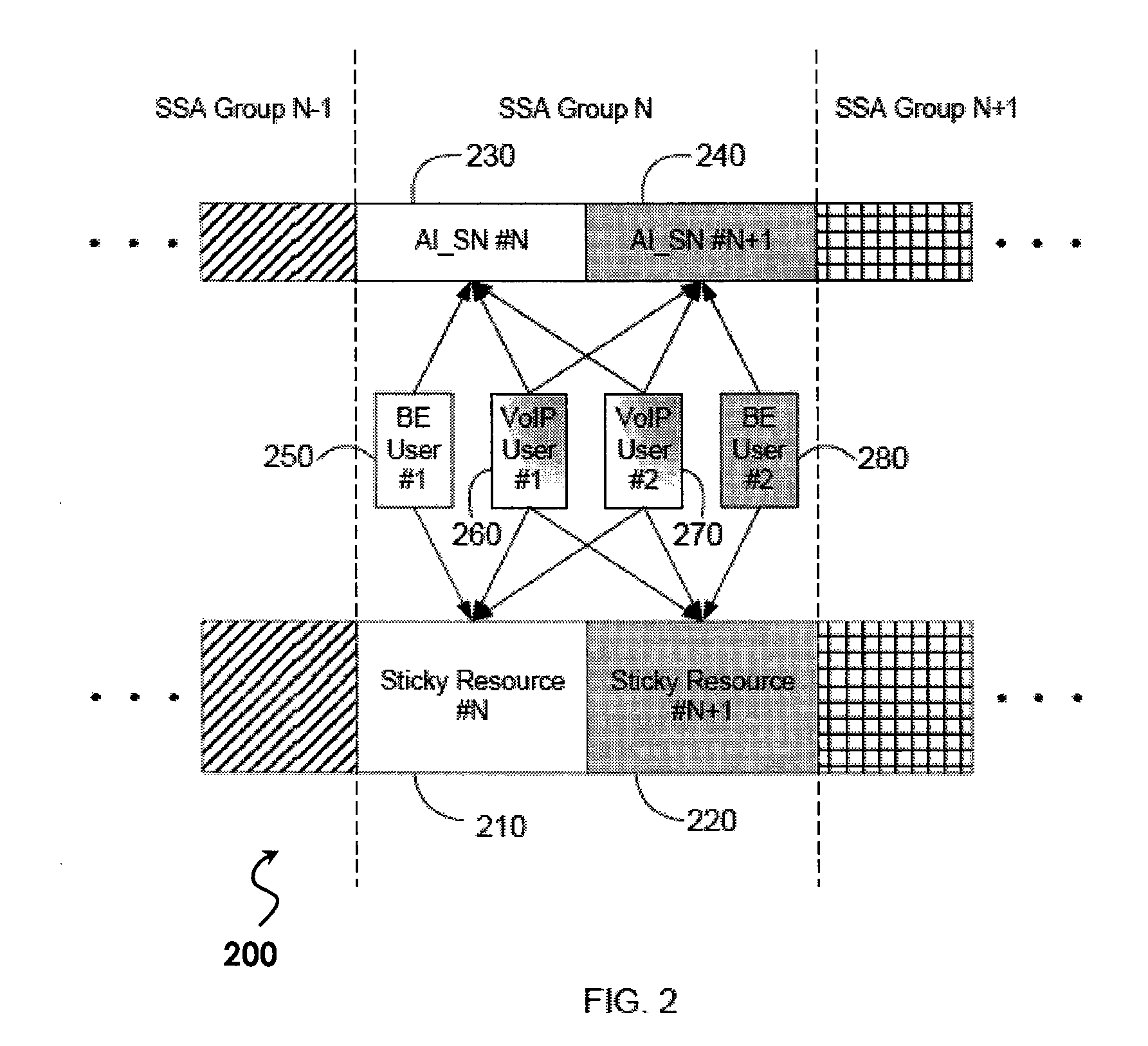System For Grouping Users To Share Time-Frequency Resources In A Wireless Communication System
a wireless communication system and user technology, applied in the field of wireless communication systems, can solve the problems of packets not being decoded correctly, sticky radio resources assigned to users being left unused, and the possibility of unused or underutilized radio resources, so as to improve overall system efficiency, reduce the delay for users with time-sensitive applications, and shorten the delay of queuing
- Summary
- Abstract
- Description
- Claims
- Application Information
AI Technical Summary
Benefits of technology
Problems solved by technology
Method used
Image
Examples
first embodiment
[0023]Referring now to FIG. 2, one embodiment of a resource-sharing scheme 200 according to the present invention is illustratively depicted. In FIG. 2, an SSA Group N comprises two shared sticky resources 210 and 220. In a first embodiment, each of these shared resources forms an independent channel to carry data traffic for different users. AI_SN indicators 230 and 240 indicate whether or not a new packet has started in the shared sticky resources 210 and 220, respectively. AI_SN indicators 230 or 240 may toggle between a first state and a second state when a new packet starts in each respective shared sticky resource. Otherwise, AI_SN indicator 230 or 240 may remain in its previous state. In the example depicted in FIG. 2, a BE user 250 and two VoIP users 260 and 270 share first sticky resource 210, while the same two VoIP users 260 and 270 and a second BE user 280 share second sticky resource 220.
[0024]A transmitter at an associated base station scrambles an encoded data sub-pac...
embodiment 300
[0030]In an alternative embodiment, each of the shared sticky resources within an SSA group may form independent channels, or pipes, to carry traffic for different users. One or more shared sticky resources within a group may alternatively form a combined channel, or pipe, to carry traffic for at least one user based on: channel and traffic conditions; the user type; the availability of each shared resource; and which shared resources are assigned to the scheduled user if not all shared resources within the SSA group are assigned to the scheduled user. For example, users whose traffic may be carried by the combined pipe may be limited to the non-VoIP users, as the data rate for a VoIP application is relatively constant. In this case, those users whose traffic can be carried by the combined pipe need to perform blind decoding, in view of the possibility that both the individually assigned shared pipe and the combined assigned shared pipe may carry the traffic for this user. FIG. 3 pr...
embodiment 200
[0032]Referring back to embodiment 200 of FIG. 2, users 250, 260, 270, and 280 are assigned to respective shared sticky resources with a sticky assignment. In addition, users without time-sensitive applications may be assigned to any of the shared resources, or combination of any of the shared resources, within an SSA group on a temporary basis (i.e., a non-sticky assignment); as long as those shared resources are available. Users assigned with non-sticky assignment to a shared resource do not need to perform blind decoding, or monitor the AI_SN indicator.
[0033]Therefore, sharing operation is transparent to a non-sticky user. Also, when the base station starts transmission of a new packet for a non-sticky user, assigning a non-sticky user to the shared sticky resources is also transparent to sticky users 250, 260, 270, and 280; as far as decoding is concerned. In order to decode their own packet, sticky users 250, 260, 270, and 280 each flush their respective detection buffer only w...
PUM
 Login to View More
Login to View More Abstract
Description
Claims
Application Information
 Login to View More
Login to View More - R&D
- Intellectual Property
- Life Sciences
- Materials
- Tech Scout
- Unparalleled Data Quality
- Higher Quality Content
- 60% Fewer Hallucinations
Browse by: Latest US Patents, China's latest patents, Technical Efficacy Thesaurus, Application Domain, Technology Topic, Popular Technical Reports.
© 2025 PatSnap. All rights reserved.Legal|Privacy policy|Modern Slavery Act Transparency Statement|Sitemap|About US| Contact US: help@patsnap.com



